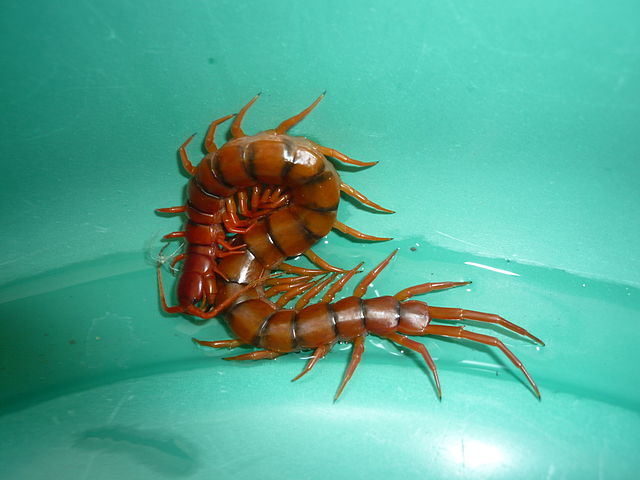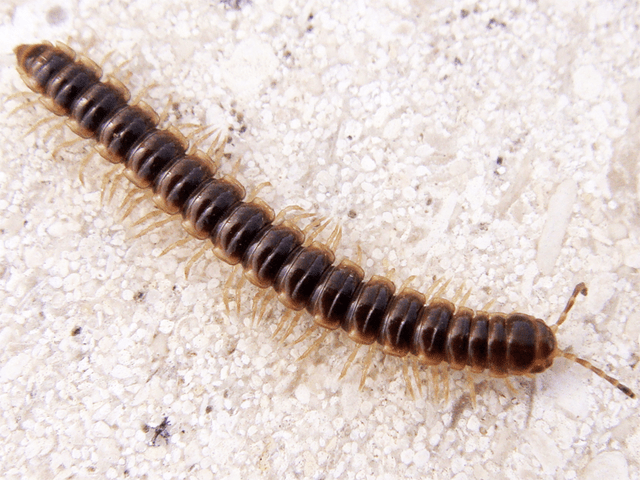Difference Between Chilopoda and Diplopoda
Chilopoda vs Diplopoda
Difference between Chilopoda and Diplopoda is a little hard to understand as they are both very much alike in appearance. Chilopoda and Diplopoda are two subclasses that come under Class Myriapoda. The animals of the subclass Chilopoda are called centipedes and animals belong to subclass Diplopoda are known as millipedes. Both centipedes and millipedes are invertebrates with true coeloms. These creatures have the most common features that exist in all the arthropods including chitinous exoskeleton and segmented appendages. Chilopods and diplopods have anterior head region and posterior worm-like body with numerous segments. Each segment contains segmented appendages. These creatures can be easily identified due to presence of large number of legs. Both animal groups show internal fertilization and lay eggs. In this article, the distinguishing features of each creature is highlighted and through which the difference between Chilopoda and Diplopoda is discussed.
What is Chilopoda?
Subclass Chilipoda includes centipedes comprising about 3000 identified species. These creatures are carnivorous and feed on small insects. They have a pair of poison fangs on the posterior end of their body. The poisons can be toxic to human and extremely painful, but it does not cause fetal injuries. All segments contain only one pair of appendages. Head contains a pair of appendages that act as sensory organs. Even though they are called centipedes, which means 100 legs, the adult centipedes have 15, 21, or 23 pair of legs. In certain centipede species, young are born with their final number of legs. But in several species, growth of legs take place after hatching.

Centipede
What is Diplopoda?
Subclass Diplopoda includes millipedes and comprises of more than 12, 000 identified species. Most known millipedes are herbivores and feed mainly on decaying plant materials. Unlike the centipedes, millipedes have two pairs of appendages on each segment. Though the name ‘millipedes’ implies the presence of 1000 legs, the adult millipedes usually have 100 or fewer legs. Most millipedes tend to roll their body resembling a flat coil or sphere as a defensive action. Nearly all species of millipedes have a pair of glands in each segment that produce bad-smelling fluid, which is also used as a defensive action. Some millipedes can produce cyanide gas from the segments near the head.

Millipede
What is the difference between Chilopoda and Diplopoda?
• Chilopoda includes centipedes, while Diplopoda includes millipedes.
• Chilopods have one pair of appendages on each segment, whereas Diplopods have two pair of appendages on each segment.
• Antennae of chilopods are long, whereas that of Diplopods are short.
• Chilopods have poison fangs, but diplopods do not.
• Most chilopods are carnivores, whereas most diplopods are herbivores.
• Adult chilopods have 15, 21 or 23 pair of legs, whereas adult diplopods have 100 or fewer legs.
• Chilopods can move faster than diplopods.
• Unlike chilopods, millipedes can role their body when they are threatened.
• There are about 3000 chilopods species and more than 12,000 species of diplopods have been identified so far.
Images Courtesy:
ncG1vNJzZmivp6x7pbXFn5yrnZ6YsqOx07CcnqZemLyue8OinZ%2Bdopq7pLGMm5ytr5Wau26vx6KjqKifma5urc2dZK%2BrXZm2sbjOqaadmV8%3D